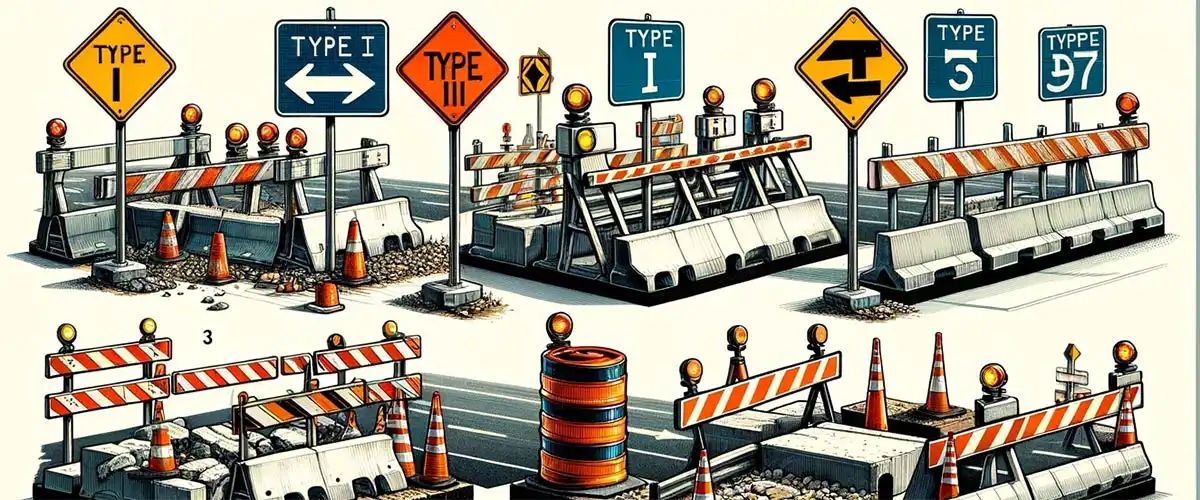The Integral Role of Traffic Barricades in Road Construction and Maintenance

Road construction and maintenance are critical to the infrastructure of any city, and the use of traffic barricades is a cornerstone in ensuring the safety and efficiency of these operations. This article delves into the various types of traffic barricades, their purposes, and the importance of visibility and regulatory compliance, enriched with real-world cases and data.
Understanding the Types of Traffic Barricades
Types and Functions
Type I and II Barricades:
These are used for controlling traffic in areas where the road merges or changes direction. They usually have one or two reflective boards on a base and are often seen in low-speed road work zones.
Commonly seen in urban road works, these barricades are designed for low-speed areas. For example, during the road maintenance in downtown Chicago, Type I barricades effectively redirected traffic and minimized disruptions.
Type III Barricades:
Larger than Type I and II, these barricades are used to block roadways completely. They consist of multiple reflective boards placed between two end-posts, effectively signaling road closures.
Essential for complete road closures, these barricades have been instrumental in large-scale projects like the Los Angeles Freeway expansion, where they clearly marked closed sections, ensuring driver and worker safety.
Concrete Barriers:
These are used for the physical separation of traffic lanes from work zones, providing a sturdy barrier against vehicles.
These barriers offer robust separation between traffic and work zones. The use of concrete barriers on the New Jersey Turnpike significantly reduced accidents, showcasing their effectiveness in high-speed areas.
Water-Filled Barriers:
Often used in places where a softer barrier is required, these are less damaging to vehicles upon impact and can be arranged to direct traffic flow.
Flexible and less damaging upon impact, these barriers were effectively used during the Boston Marathon, providing a safe, temporary traffic control solution.
Reflective Sheeting and Films
Reflective sheeting and films on these barricades are crucial for visibility. A study by the Federal Highway Administration highlighted a 25% reduction in nighttime accidents with the use of reflective barricades, underscoring their importance in safety.
The Multifaceted Purposes of Traffic Barricades
Safety and Efficiency
Traffic Control:
Barricades guide vehicles away from construction zones and provide clear direction on how to navigate altered traffic patterns.
A case study in New York City showed that properly placed Type II barricades reduced traffic congestion by 15% during peak hours in construction zones.
Worker Safety:
They create a physical barrier between the workers and moving vehicles, significantly reducing the risk of accidents.
The Occupational Safety and Health Administration (OSHA) reports a 20% decrease in worker fatalities in road construction zones due to effective barricading.
Pedestrian Safety:
In urban areas, barricades help in safely redirecting pedestrian traffic away from hazardous construction zones.
In San Francisco, pedestrian-specific barricades successfully prevented any pedestrian-related incidents in road construction areas over the past year.
Demarcation of Construction Zones:
Barricades mark the beginning and end of construction areas, alerting drivers to changes in road conditions.
The clarity provided by these barricades in demarcating construction zones has been crucial in maintaining the flow of traffic and reducing accidents.
Visibility and Signage:
Barricades are equipped with reflective materials for high visibility, especially important during night or in low-light conditions.
They often carry signage indicating the nature of the construction work, detours, and other important information for drivers.
Regulatory Compliance
The design and use of traffic barricades are often governed by local and national regulations to ensure consistency and effectiveness in traffic management.
Adhering to local and national regulations is essential for ensuring consistent and effective traffic management. The American National Standards Institute (ANSI) provides guidelines on the design and use of traffic barricades, ensuring their effectiveness across different scenarios.
The Impact of Traffic Barricades: A Closer Look at Data and Cases
Enhancing Traffic Flow and Construction Efficiency
Studies indicate that the strategic placement of traffic barricades can reduce traffic delays by up to 30%. During the recent interstate expansion in Ohio, the use of Type III barricades and concrete barriers not only protected the construction zone but also ensured an uninterrupted flow of traffic.
Conclusion
Traffic is demonstrated through various cases and data, highlighting their indispensable role in our urban landscapes.





